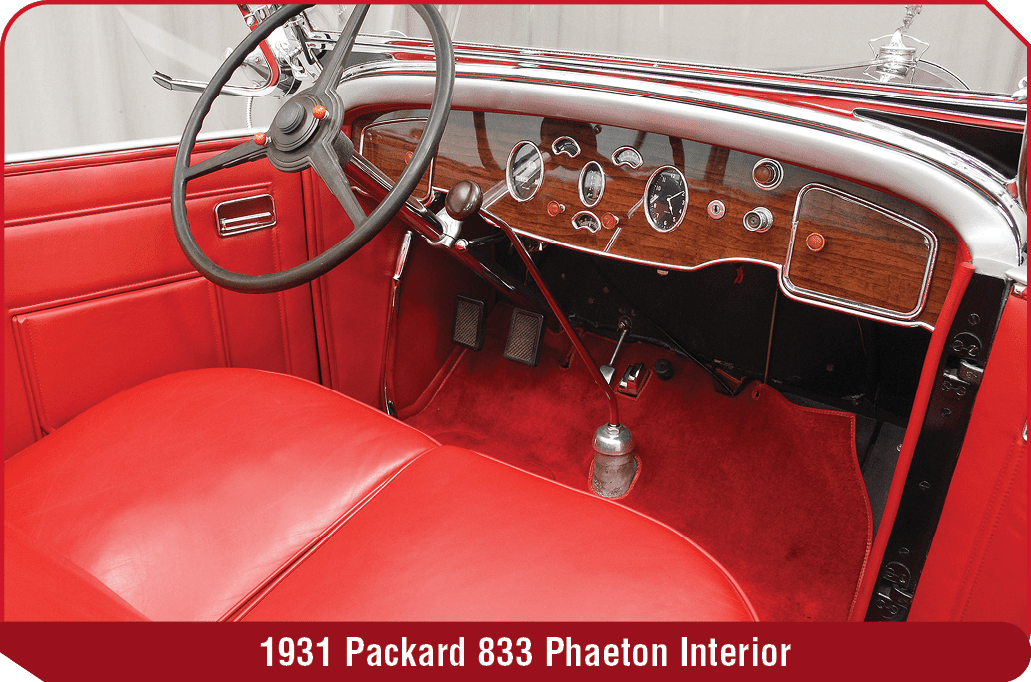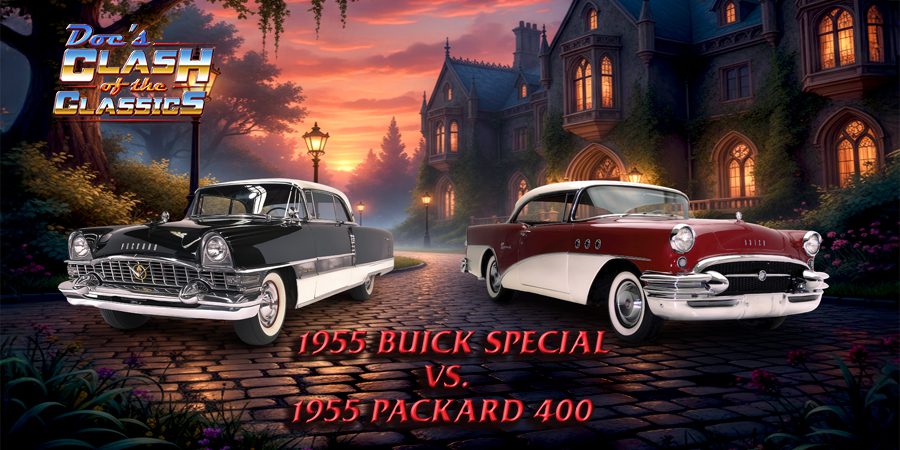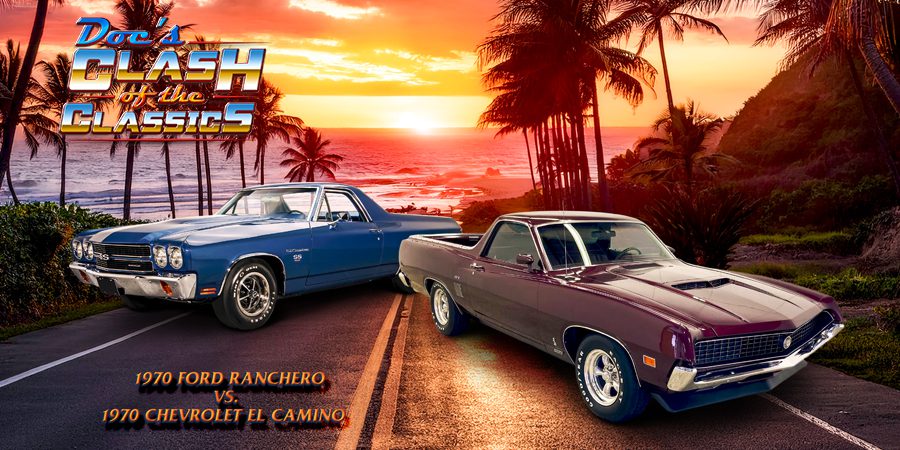Welcome once again, to Clash of the Classics. This month we’ll head back to 1931 for a look at two of the most beautiful cars ever produced. 1931 was a peculiar time in American history, on one hand, science was making headlines as the first electron microscope was invented. Its contributions to the medical and scientific fields are almost immeasurable. Also notable for 1931 was the first non-stop flight across the Pacific Ocean from Japan to Washington, the electric guitar was invented, and The Star-Spangled Banner was adopted as the national anthem.
There were, however, other less-than-memorable events happening in 1931, none more despairing than the Great Depression which caused unimaginable suffering. People struggled to find work and provide for themselves and their families in what was arguably one of the bleakest periods in our nation’s history. That being said, all was not doom and gloom as two of the most beautiful and well-developed cars ever built belonged to that time period. Today, the battle is between the 1931 Packard 833 Phaeton and the 1931 Auburn 8-98 Convertible Phaeton. Let’s begin with a brief look at the Packard.
 The 1931 Packard showcased here is a Dual Cowl Phaeton model, one of the most attractive body styles fitted to the 833 chassis. For those readers who may not be familiar with the term, “Dual Cowl” is a body style for cars where one cowl or bulkhead separates the rear passengers from the front passengers and driver. The other cowl often has its own folding windshield.
The 1931 Packard showcased here is a Dual Cowl Phaeton model, one of the most attractive body styles fitted to the 833 chassis. For those readers who may not be familiar with the term, “Dual Cowl” is a body style for cars where one cowl or bulkhead separates the rear passengers from the front passengers and driver. The other cowl often has its own folding windshield.
As you’ll notice here in the images, the body lines are as timeless and elegant as any ever produced regardless of manufacturer, make, or model. For us here at Clash of the Classics, the 1930s-type automotive designs are unquestionably the most distinctive and tasteful of any ever created. The fender-to-headlight transition is just beautiful as are the accordion-style hood and hinges.
 Spare tires molded into the lower front fenders are a graceful touch as are the side view mirrors mounted to the tire tops. 1931 Packards featured 19-inch wheels as well as an increase in horsepower and a four-speed transmission. In the case of the 833, the 319 cubic inch straight-eight made a full 100 horsepower.
Spare tires molded into the lower front fenders are a graceful touch as are the side view mirrors mounted to the tire tops. 1931 Packards featured 19-inch wheels as well as an increase in horsepower and a four-speed transmission. In the case of the 833, the 319 cubic inch straight-eight made a full 100 horsepower.
The interior is well laid out, the dash and instrumentation are center-mounted for easy viewing, and separate his/hers type glove compartments are a nice touch. The folding top is gorgeous and surprisingly well-fit for the period.
The Goddess of Speed radiator mascot, rear-mounted trunk rack with black leather trunk, a full set of side curtains, and a locking storage compartment in the back of the front seat complete the overall vehicle build.
 Several years ago, our crew at Horsepower Broadcasting had the distinct pleasure of hosting a Classic Concours vehicle show in Southern California. It was an event I won’t quickly forget as we were treated to some of the finest and rarest vehicles in the world. Among the many vehicles entered were the Packard 833 Phaeton and the Auburn that we’ll look at next. For true automotive enthusiasts, these cars are awe-inspiring on so many levels. Design engineers were free to experiment with varying shapes and layouts without the restrictions of fuel economy and wind resistance considerations. The results were true beauty and creativity. Manufacturers were immediately recognizable by design proclivities with an ardent approach to model distinctiveness. Unfortunately, today’s vehicles are largely boring in terms of uniqueness. Gone are the days of big fenders and high rooflines, for those of us who still prefer those types of designs, fortunately, we have these cars to remind us of what were arguably better times.
Several years ago, our crew at Horsepower Broadcasting had the distinct pleasure of hosting a Classic Concours vehicle show in Southern California. It was an event I won’t quickly forget as we were treated to some of the finest and rarest vehicles in the world. Among the many vehicles entered were the Packard 833 Phaeton and the Auburn that we’ll look at next. For true automotive enthusiasts, these cars are awe-inspiring on so many levels. Design engineers were free to experiment with varying shapes and layouts without the restrictions of fuel economy and wind resistance considerations. The results were true beauty and creativity. Manufacturers were immediately recognizable by design proclivities with an ardent approach to model distinctiveness. Unfortunately, today’s vehicles are largely boring in terms of uniqueness. Gone are the days of big fenders and high rooflines, for those of us who still prefer those types of designs, fortunately, we have these cars to remind us of what were arguably better times.
Of the many vehicle manufacturers we research and experience here at Gears magazine, it is the Packard that leaves us most disappointed. For those who lived during the early to mid-20th century, it was most likely unthinkable that a company such as Packard would fail. The product line was exceptional in almost every detail, and build quality was an industry standard as was production. Unfortunately, those at the top who were making business decisions were slightly less than foresightful and today all we have are these samples of a time long since passed. For automotive enthusiasts such as myself, I often wonder what sort of cars Packard might be producing today if only the company had survived.
 Let’s look now at the 1931 Auburn 8-98 Convertible Phaeton.
Let’s look now at the 1931 Auburn 8-98 Convertible Phaeton.
It was 1924 when E.L. Cord took over operations at the Auburn Motor Company and it was exactly what was needed to restore the company’s fortunes. For years, Auburn built good quality cars but they lacked style and attractiveness. That all changed with the arrival of Mr. Cord. Style and value were now the focus, as bright color schemes were used to move unsold inventory before redesigning the entire lineup.
Complete new models with updated styling, under his direction, now came standard with engines built by Lycoming, and almost overnight, Auburn established itself as a leader in the entry-level luxury car market. 8-cylinder power combined with great looks and affordability made Auburn Motors immediately competitive.  Although the Great Depression caused slow sales in previous years, Auburn was enjoying measurable success in 1931 due largely to the 8-98 (8 cylinders, 98 horsepower). The straight-eight engine is known for its power and smooth acceleration. Developed by Lycoming, the engine is the focal point of the powertrain. Known universally for its aircraft engine development, Lycoming also provided engines to several automotive platforms from 1910 to 1937. Auburn, Cord, and Duesenberg were among some of the lines using the Lycoming engines, but it was Auburn that was most notable. Engine balancing and blueprinting were not new in the early 20th century but Lycoming took it to new levels in terms of quality. Even to this day, Lycoming continues to produce some of the finest aircraft engines in the world.
Although the Great Depression caused slow sales in previous years, Auburn was enjoying measurable success in 1931 due largely to the 8-98 (8 cylinders, 98 horsepower). The straight-eight engine is known for its power and smooth acceleration. Developed by Lycoming, the engine is the focal point of the powertrain. Known universally for its aircraft engine development, Lycoming also provided engines to several automotive platforms from 1910 to 1937. Auburn, Cord, and Duesenberg were among some of the lines using the Lycoming engines, but it was Auburn that was most notable. Engine balancing and blueprinting were not new in the early 20th century but Lycoming took it to new levels in terms of quality. Even to this day, Lycoming continues to produce some of the finest aircraft engines in the world.
The updated chassis came standard with Lovejoy hydraulic shock absorbers that served the platform well in terms of road handling and overall organic feel.
 The new bodies from Cord-owned coachbuilders gave prospective buyers affordable options while maintaining a certain level of high-end appeal. Many folks during that time were curious about the Hollywood lifestyle with glitz and glamour, and the new Auburns, regardless of body style offered a glimpse into that sort of living at incredibly attractive prices. Two of my favorite areas of the car are the front suicide and rear conventional-type doors. Ingress and egress from either the front or rear of the vehicle is easier and much more comfortable with this type of design. During the time I spent experiencing the car up close, I couldn’t help but feel envious of those who were able to experience the car when it was new. While I agree, that living during the Great Depression era was undoubtedly difficult, there was also an innocence that has long since been lost. But I digress…
The new bodies from Cord-owned coachbuilders gave prospective buyers affordable options while maintaining a certain level of high-end appeal. Many folks during that time were curious about the Hollywood lifestyle with glitz and glamour, and the new Auburns, regardless of body style offered a glimpse into that sort of living at incredibly attractive prices. Two of my favorite areas of the car are the front suicide and rear conventional-type doors. Ingress and egress from either the front or rear of the vehicle is easier and much more comfortable with this type of design. During the time I spent experiencing the car up close, I couldn’t help but feel envious of those who were able to experience the car when it was new. While I agree, that living during the Great Depression era was undoubtedly difficult, there was also an innocence that has long since been lost. But I digress…
The 1931 Auburn we feature here in this issue of Gears is a gorgeous restoration in a two-tone red and burgundy color scheme. The chrome wheels with the big whitewalls further enhance the look as do the chrome accents along the cowl and grille areas. The dark tan interior goes well with the rest of the vehicle and is very well judged against the paint.
As is the case with all of our Clash of the Classics battles, there must be a victor in the contest. While both of these cars are truly legendary, it is the Auburn that gets the nod today. Its innovative styling is certainly a high point in the consideration but ultimately, for me, it is the level of enthusiasm that surrounded its development and production. Even a cursory close-up inspection reveals how excited the developers were during the creation of this car. If anyone ever has the opportunity to visit a Concours-type car show that features the Auburn lineup, I strongly suggest you attend. I am confident you’ll leave with a newfound appreciation for these platforms.
As always, we’d love to hear from you, let us know which car you prefer and why.
Until next time when we take a ride on a classic highway, stay safe… stay timeless… stay classic!
About the Author Donny Caccamise is an Automotive Technology Graduate and a Certified Master Technician with more than 40 years of automotive industry experience. Before retiring, he hosted the Nationally Syndicated Automotive Talk Radio Show “Horsepower for an Hour” airing on 161 AM and FM radio stations across the nation. He is a retired member of the ATRA Board of Directors, and retired transmission shop owner. Vintage and classic cars are his specialty. Contact Donny at donnycaccamise@gmail.com















